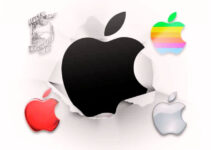Lego is a toy and plastic building block manufacturing Danish multinational company. Ole Kirk Christiansen founded the toy company in 1934. Today, we’ll discuss Porter’s five forces analysis of Lego; bargaining power of suppliers and buyers; threat of new entrants and substitutes; and intense rivalry as competitive forces in strategic management.
Substitutes and Competitors of Lego
- Hot Wheels
- Fisher Price
- Bandi Namco
- Barbie
- Mega Brands
- Mattel
- Spin Master
- Cobi
- Hasbro
Porter’s five forces analysis of Lego would analyze the bargaining power of suppliers and buyers; the threat of new entrants and substitutes; and intense rivalry as competitive forces in strategic management. Here’s Lego Porter’s five forces analysis of toy companies as follows;
Porter’s Five Forces Analysis of Lego
Let’s discuss Porter’s five forces analysis of Lego as competitive forces in strategic management and they’re as follows;
Bargaining Power of Suppliers in Lego
The bargaining of suppliers is Moderate and high in the toys business market as competitive forces in strategic management. Some of the main factors impacting the bargaining power of suppliers in Lego Porter’s five forces analysis of Toys Company are as follows;
I-Raw Material & Supplies
The raw materials used for the production of Lego’s building blocks are Oil, polymer, and acrylonitrite butadiene styrene. The global oil market sets the prices of the oil, and its supply and price keep fluctuating throughout the year. However, oil is readily available but it is an expensive commodity. The expensive nature of the raw supplies increases the bargaining power of suppliers.
II-Limited Alternative
Lego can’t switch to other alternatives of production materials like wood, metal, or aluminum; due to the fact that they all are expensive materials and supplies. The lower switching capability of the company further decreases the company’s bargaining power.
Bargaining Power of Buyers in Lego
The bargaining of Buyers is Higher in the toys business as competitive forces in strategic management. Some of the main factors impacting the bargaining power of suppliers in Lego Porters’ 5 forces analysis of toy company are as follows;
I-Low Price Toys Options
Lego sells its toys and building blocks at a premium price range to the customers. There are many low-cost toy manufacturing companies available in the market; they all offer unique toys for customers. Customers could easily switch to affordable toys and alternative brands without incurring any cost, and it amplifies the bargaining power of customers.
II-Media Franchise
In order to compete against low-cost competitors; Lego has successfully partnered up with media franchises and story action figures. The company uses these characters and figures in its toys, and it helps the company to differentiate itself from its competitors.
Threat of New Entrants in Lego
The threat of new entrants is lower in the toys business market as competitive forces in strategic management. Some of the main factors impacting the threat of new entrants in the Lego five forces analysis of the toy company are as follows;
I-High Investment
Creating and developing one toy is not a difficult task; the critical part is a mass product and worldwide distribution of toys in every store. Without mass production and economies of scale, the toy company can’t compete against the leading brands and offer a competitive price. All such initiatives require heavy investment, and they decrease the threat of new entrance levels.
II-Differentiation & Marketing
Along with heavy production investment; Lego invests a significant amount of capital resources in marketing, production, and media presence. It has allowed the toy company to earn a loyal database of customers in the market with years of marketing and branding.
Threat of Substitutes to Lego
The threat of substitute products and brands is higher in Lego as a competitive forces in strategic management. Some of the main factors impacting the threat of new substitutes in the toy company 5 forces analysis of Lego are as follows;
I-Multiple Entertainment Options
Lego is operating its business in the toys and entertainment business market. There are various entertainment options available to the customers; movies, TV shows; social media, video games, and online surfing. However, these all options are low-cost alternatives, and they increase the threat of substitution rate.
Competitive Rivalry in Lego
The competitive rivalry among toy companies is very high as competitive forces in strategic management. Some of the main factors impacting competitive rivalry in the toy company 5 forces analysis of Lego are as follows;
I-Tough Competition
Lego is facing tough competition from competitors like Toys R Us, Barbie, Hasbro, Mattel, and Bandai Namco. They all are toy manufacturing companies and they have earned a significant market share and loyal database of customers. It has become highly difficult for the toy brand to maintain its premium market share in the presence of low cost competitors.
II-Innovation
In order to differentiate itself from its competitors, Lego focuses on innovative methods and techniques of unique building blocks. It allows the company to earn the trust and confidence of customers with unique constructing building blocks. As a result, customers would always expect something new and interesting from the company’s offer.
Conclusion: Lego Porter’s Five Forces Analysis |5 Forces Analysis of Lego
After an in-depth study of Porter’s five forces analysis of Lego; we have realized that Lego is the world’s leading toys manufacturing brand. If you are learning about the Lego 5 forces analysis of toys company; then you should keep in mind the abovementioned bargaining power of suppliers and buyers; the threat of new entrants and substitutes; and intense rivalry as competitive forces in strategic management.

Ahsan is an accomplished researcher and has a deep insight in worldly life affairs. He goes Live 3 days a week on various social media platforms. Other than research writing, he’s a very interesting person.


